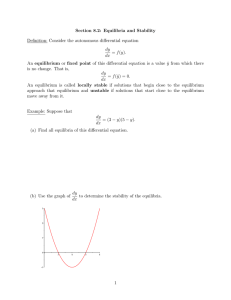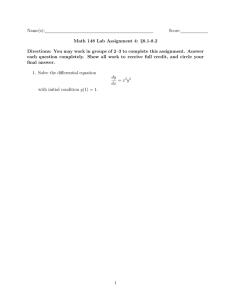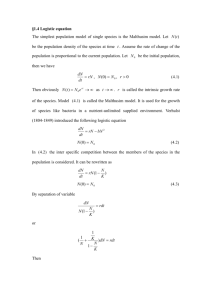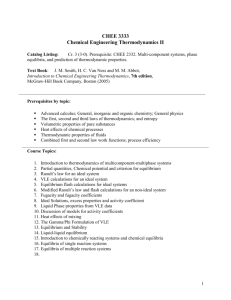Section 8.2: Equilibria and Stability Definition: Consider the autonomous differential equation dy
advertisement
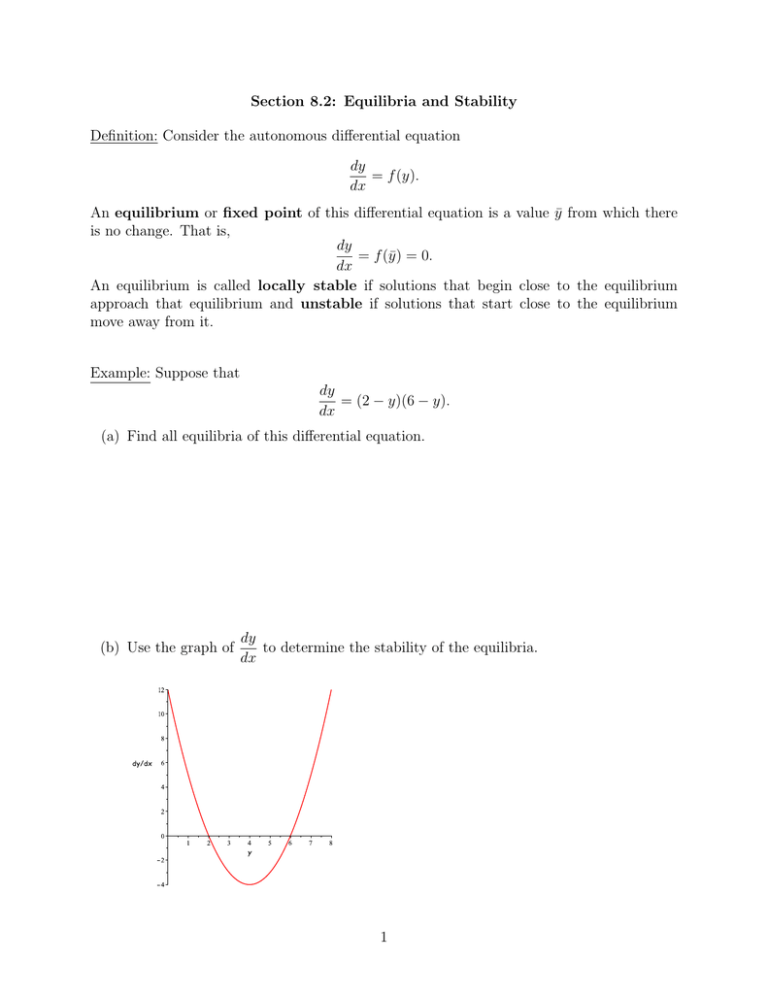
Section 8.2: Equilibria and Stability Definition: Consider the autonomous differential equation dy = f (y). dx An equilibrium or fixed point of this differential equation is a value ȳ from which there is no change. That is, dy = f (ȳ) = 0. dx An equilibrium is called locally stable if solutions that begin close to the equilibrium approach that equilibrium and unstable if solutions that start close to the equilibrium move away from it. Example: Suppose that dy = (2 − y)(6 − y). dx (a) Find all equilibria of this differential equation. (b) Use the graph of dy to determine the stability of the equilibria. dx 1 Theorem: (Stability Criterion) Suppose that ȳ is an equilibrium of the autonomous differential equation dy = f (y), dx where f is a differentiable function. If f 0 (ȳ) < 0, then ȳ is locally stable and if f 0 (ȳ) > 0, then ȳ is unstable. The value f 0 (ȳ) is called an eigenvalue. Example: Suppose that dy = y(2 − y)(y − 3). dx (a) Find all equilibria of this differential equation. (b) Use the graph of dy to determine the stability of the equilibria. dx (c) Compute the eigenvalues associated with each equilibrium and determine its stability. 2 Example: Suppose that a fish population evolves according to the logistic equation and that fish are harvested at a rate proportional to the population size. If N (t) denotes the population size at time t ≥ 0, then dN N = rN 1 − − hN. dt K (a) Find all biologically-feasible equilibria of this differential equation. (b) Determine the stability of each equilibrium. (c) Find the maximal harvesting rate that maintains a positive population size. 3 Example: A tank contains 400 liters of pure water. A brine that contains 3 grams of salt per liter enters the tank at a rate of 0.2 liters per second. The solution is kept well mixed and drains from the tank at the same rate. (a) Find the differential equation for the concentration, C(t), of salt in the tank at time t. (b) Solve the differential equation and determine lim C(t). t→∞ (c) Find all equilibria of the differential equation and determine their stability. 4 The Allee Effect A sexually reproducing species may experience a disproportionately low recruitment rate when the population density falls below a certain level, due to a lack of suitable mates. This phenomenon is called an Allee effect. Example: Let N (t) denote the size of a population at time t ≥ 0, and suppose that dN N = rN (N − a) 1 − , dt K where r, a, and K are positive constants and 0 < a < K. Find all equilibria of this equation and determine their stability. What is the biological meaning of a? 5 The Levins Model A metapopulation is a collection of subpopulations. Each subpopulation occupies a patch, and patches are linked via migration of individuals. In this setting, we keep track only of what proportion of patches is occupied by subpopulations. Example: (The Levins Model) Suppose that subpopulations go extinct at a constant rate, m > 0, which stands for mortality. Vacant patches can be colonized at a rate that is proportional to the fraction of occupied patches. The constant of proportionality is denoted by c > 0, which stands for colonization. Let p(t) denote the fraction of patches that are occupied at time t ≥ 0. Then dp = cp(1 − p) − mp. dt Find all equilibria of this differential equation, and determine their stability. 6
